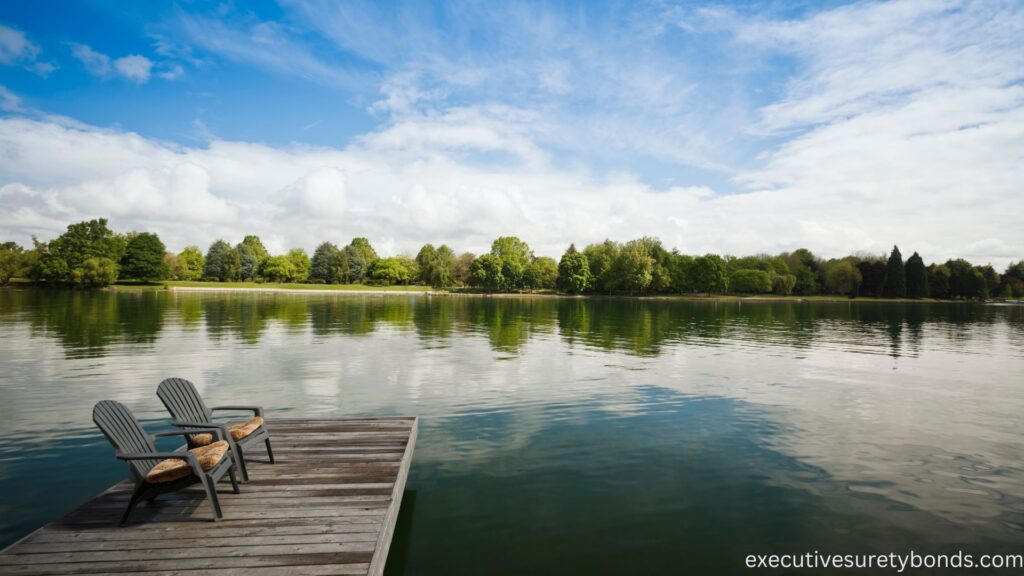Introduction
Nestled in the Pacific Northwest, Washington State’s picturesque aquatic landscapes are home to a diverse array of activities, from marinas to aquaculture farms. Beneath these serene waters lies an important element in maintaining the integrity of aquatic land leases – the Washington State Aquatic Land Lease Bond. This article seeks to unveil the purpose and significance of this bond, making it accessible to both waterfront property lessees and those intrigued by the world of aquatic land leases.
The Purpose of the Bond
Let’s begin by understanding the purpose of the Washington State Aquatic Land Lease Bond. Aquatic land leases allow individuals and entities to lease state-owned aquatic land for various activities, such as marinas, shellfish farming, or recreational docks. To safeguard state interests and ensure compliance with lease agreements, the state mandates that lessees obtain this bond.
The bond serves as a financial guarantee, assuring that lessees will adhere to the terms of their leases, including payment of lease fees and adherence to environmental regulations. In simpler terms, it’s like a promise: if a lessee fails to fulfill their obligations, violates lease terms, or causes harm to aquatic ecosystems, there are funds available to cover potential losses incurred by the state.
The Cost of the Bond
Now, let’s clarify the cost of the Washington State Aquatic Land Lease Bond. The bond amount doesn’t represent the upfront sum paid by the lessee. Instead, it signifies the maximum coverage provided by the bond. The actual cost that a lessee pays for this bond may vary based on several factors.
The bond cost depends on the lessee’s lease history, financial stability, and the scope of their aquatic land activities. Lessees with a strong history of compliance and financial stability often pay lower premiums, which are a fraction of the bond amount. Conversely, those with a less favorable track record or those engaged in larger-scale aquatic land activities may pay higher premiums. This variable pricing ensures that the bond aligns with each lessee’s unique circumstances.
How the Bond Works
Let’s explore how the Washington State Aquatic Land Lease Bond operates in practice. When a lessee obtains this bond, they enter into a legal agreement with a bonding company. The bonding company essentially vouches for the lessee’s commitment to ethical land use and compliance with lease terms in their aquatic activities.
If, for any reason, the lessee fails to meet their obligations, violates lease terms, or causes harm to aquatic ecosystems, a claim can be made against the bond. The bonding company then investigates the claim and, if it’s found to be valid, provides compensation, up to the bond’s maximum amount, to cover potential losses incurred by the state.
Conclusion
In conclusion, the Washington State Aquatic Land Lease Bond is an essential tool in ensuring the ethical and responsible use of state-owned aquatic land for various activities. It offers assurance to state authorities, environmentalists, and the public that lessees will uphold the highest standards of ethical land use, environmental stewardship, and compliance with lease agreements.
Whether you’re a waterfront property lessee, a marine enthusiast, or simply intrigued by the world of aquatic land leasing, comprehending the significance of compliance and the purpose of bonds is essential. This knowledge not only fosters responsible land use but also ensures the preservation of Washington State’s pristine aquatic environments for generations to come.
Frequently Asked Questions
Can a lessee use the bond to cover costs related to marine conservation efforts, such as restoring or enhancing aquatic ecosystems within their leased area?
This is an uncommon but important question, particularly for lessees who are committed to environmental stewardship. The primary purpose of the Washington State Aquatic Land Lease Bond is to ensure compliance with lease terms and cover potential losses incurred by the state due to lessee actions. It typically does not cover expenses related to conservation or enhancement efforts. Lessees interested in such initiatives should seek alternative funding sources or grants for environmental projects.
If a lessee subleases a portion of their aquatic land for a specific activity, such as boat storage, do they need a separate bond for the subleased area, or does the primary bond cover all leased portions?
This is an uncommon but practical concern for lessees who sublease parts of their leased aquatic land. The need for a separate bond for subleased areas may vary depending on state regulations and the terms of the sublease agreements. Lessees should consult with regulatory authorities and legal experts to determine whether separate bonding is required for subleased portions.
Is it possible for a lessee to obtain a bond with a higher amount than the required minimum in Washington State, either as a proactive measure to provide extra security for the state or to meet specific contractual requirements with the state for larger lease agreements?
This is an uncommon but valid question for lessees. While the state sets a minimum bond amount, some lessees may choose to secure a bond with a higher coverage amount if they wish to provide additional reassurance to the state or meet contractual requirements for larger lease agreements. However, they should be aware that the premium cost will likely increase accordingly.

